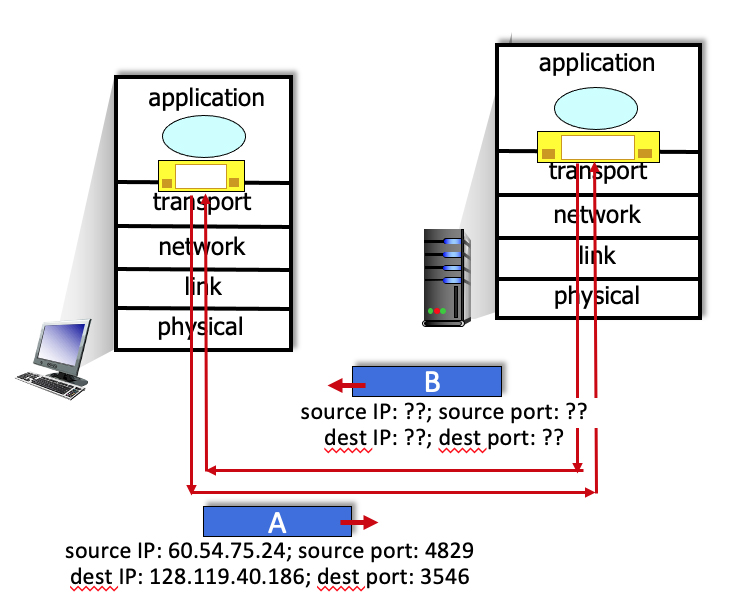Does UDP preserve application-layer message boundaries?
UDP header fields.
UDP segment length field.
Internet checksum and UDP.
What is a checksum?
Computing the Internet Checksum (1).
[Note: you can find more problems like this one here.]
Computing the Internet Checksum (2).
[Note: you can find more problems like this one here.]
UDP Checksum: how good is it?
UDP Checksum: how good is it?
IP addresses and port numbers in a UDP segment sent in reply.

Now consider the UDP datagram (and the IP datagram that will encapsulate it) sent in reply by the application on host 128.119.40.186 to the original sender host, labeled B in the figure above. Complete the sentences below ...
What are the source and destination port numbers and IP addresses? (Enter the integer port number or the 4-part dotted decimal IP address, included the period)
The source port number of the UDP segment (B) sent in reply is:
The source IP address of the IP datagram containing the UDP segment (B) sent in reply is:
The destination port number of the UDP segment (B) sent in reply is:
The destination IP address of the IP datagram containing the UDP segment (B) sent in reply is:
[Note: you can find more problems like this one here.]